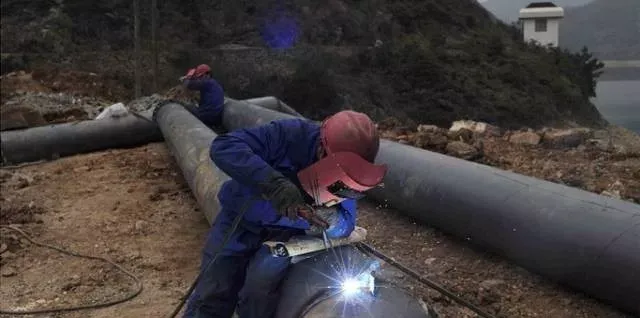Basic knowledge of welding
1. What is welding? Answer: Welding is the process of combining two or more materials (same or different) by heating or pressurizing or both to achieve a permanent connection between atoms.
2. What is an arc? Answer: The phenomenon of strong and lasting gas discharge between two electrodes supplied by the welding power supply is called an arc. 〈1〉 According to the type of current, it can be divided into: AC arc, DC arc and pulse arc. 〈2〉 According to the state of the arc, it can be divided into: free arc and compressed arc (such as plasma arc). 〈3〉 According to the electrode material, it can be divided into: melting electrode arc and non-melting electrode arc.
3. What is the base material? Answer: The metal to be welded is called the base material.
4. What is a droplet? Answer: The liquid metal droplet that melts after the tip of the welding wire is heated and transitions to the molten pool is called a droplet.
5. What is a molten pool? Answer: The liquid metal part with a certain geometric shape formed on the weldment during fusion welding is called a molten pool.
6. What is a weld? Answer: The joint formed in the weldment after welding.
7. What is weld metal? Answer: The part of metal formed after the molten base material and filler metal (welding wire, welding rod, etc.) solidify.
8. What is a shielding gas? Answer: The shielding gas used to protect the metal droplets and the molten pool from the invasion of harmful gases (hydrogen, oxygen, nitrogen) from the outside during welding.
9. What is welding technology? Answer: The general term for various welding methods, welding materials, welding processes, welding equipment, etc. and their basic theories is called welding technology.
10. What is a welding process? What does it contain? Answer: A complete set of process procedures and technical regulations in the welding process. The contents include: welding methods, pre-welding preparation, assembly, welding materials, welding equipment, welding sequence, welding operation, welding process parameters, and post-welding treatment.
11. What is CO2 welding? Answer: CO2 welding is the process of using a gas shielded arc welding with a purity of > 99.98% CO2 as the shielding gas.
12. What is MAG welding? Answer: MAG welding is the process of using a mixed gas of 75--95% Ar + 25--5% CO2 (standard ratio: 80%Ar + 20%CO2) as the shielding gas.
13. What is MIG welding? Answer: 〈1〉 Using high-purity argon gas Ar≥ 99.99% as the shielding gas to weld aluminum and aluminum alloys, copper and copper alloys and other non-ferrous metals; 〈2〉 Using 98% Ar + 2%O2 or 95%Ar + 5%CO2 as the shielding gas to weld solid stainless steel wires is called MIG welding. 〈3〉 Gas shielded welding with helium + argon inert gas mixture as protection.

14. What is TIG (Tungsten Inert Gas Welding) welding? Answer: Inert gas shielded arc welding with pure tungsten or activated tungsten (thoriated tungsten, cerium tungsten, zirconium tungsten, lanthanum tungsten) as the infusible electrode, referred to as TIG welding.
15. What is SMAW (Stand Arc Welding) welding? Answer: Arc welding method with manually operated welding rods.
16. What is carbon arc gouging? Answer: A surface processing method that uses a carbon rod as an electrode to generate an arc between the workpiece and the molten metal is blown away with compressed air (pressure 0.5-0.7Mpa). It is often used for weld root cleaning, beveling, and defect repair.
17. Why is CO2 welding more efficient than stick arc welding? Answer: 〈1〉CO2 welding has a melting speed and melting coefficient 1-3 times higher than arc welding; 〈2〉The groove section is 50% smaller than that of welding rod, and the amount of deposited metal is reduced by 1/2; 〈3〉The auxiliary time is 50% of arc welding. The three items combined: CO2 welding efficiency is 2.02-3.88 times higher than arc welding.
18. Why is the quality of CO2 welding joints better than arc welding? Answer: CO2 welds have a small heat-affected zone and small welding deformation; CO2 welds have low hydrogen content (≤1.6ML/100g), and have a small tendency to pores and cracks; CO2 welds have good forming, fewer surface and internal defects, and a higher flaw detection pass rate than arc welding.
19. Why is CO2 welding lower in overall cost than arc welding? Answer: 〈1〉 The cross-sectional area of the groove is reduced by 36-54%, saving the amount of filler metal; 〈2〉 Reduce power consumption by 65.4%; 〈3〉 The equipment shift fee is reduced by 67-80% compared with arc welding, reducing costs by 20-40%; 〈4〉 Reduce labor costs and labor hours, reducing costs by 10-16%; 〈5〉 Save auxiliary labor hours, auxiliary material consumption and deformation correction costs; Comprehensively considering the five items, CO2 welding can reduce the total welding cost by 39.6-78.7%, an average reduction of 59%.
20. Why does CO2 welding have spatter? Answer: The molten droplet at the end of the welding wire is in short-circuit contact with the molten pool (short-circuit transition), and the molten droplet explodes due to strong overheating and magnetic contraction, generating spatter. The output reactor and waveform control of the CO2 welding machine can reduce spatter to a minimum.
-
What is a medium-frequency pulse? What types of welding are suitable for?AktualnościNov.24,2025
-
Why is the overall cost of CO2 welding lower than that of shielded metal arc welding?AktualnościNov.21,2025
-
Welding Knowledge 6AktualnościNov.20,2025
-
What is a low-frequency pulse? What types of welding are they suitable for?AktualnościNov.19,2025
-
Why are the weld joints from CO₂ gas shielded welding of such high quality?AktualnościNov.18,2025
-
J506 Welding Rod - Low Hydrogen, All-Position, AC/DC E7016AktualnościNov.17,2025


